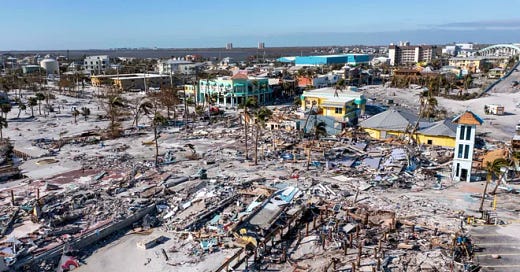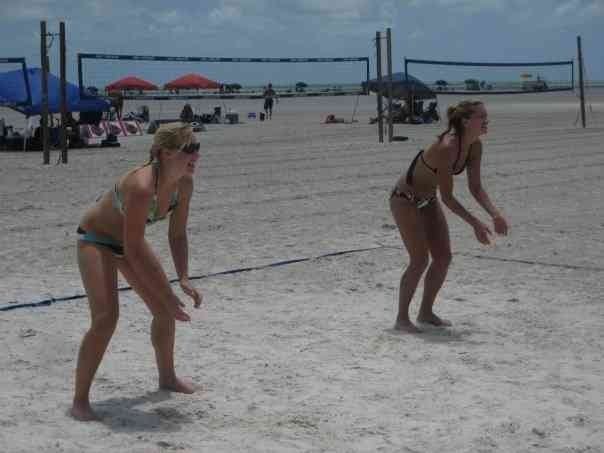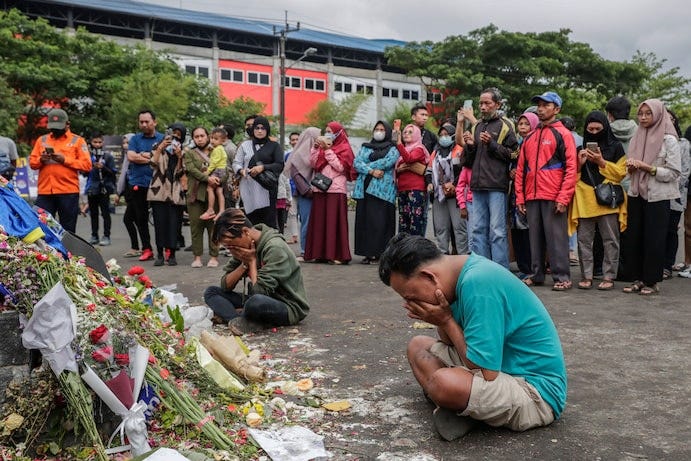News with Nuance: Oct. 7, 2022
Your Friday dose of News with Nuance: the week's biggest stories, unpacked + more ..
Welcome to News with Nuance. My plan for this post is, every Friday, I will break down some of the week’s top news stories and put them into context, with special attention to the impact of these stories where I live: Middle America; and also an analysis of these stories with historical, political, and spiritual context. This is the kind of work that breaking news journalists often simply don’t have time to do — and I’m hoping it supplies the needed nuance and context that’s often missing from our news cycle, humanizing the people and places behind the headlines.
The Headline: Ian is Florida’s deadliest hurricane since 1935. Most victims drowned.
The Context: I didn’t plan on covering Hurricane Ian two weeks in a row on this newsletter, but the truth is that the coverage of this disaster has continued to be the predominant news story of the past week, even in a news cycle that’s quick to move on to the “next thing.”
And the truth is, too, that I honestly haven’t quite known what to do with the news I keep reading about Hurricane Ian. As I’ve mentioned, Ian struck a place in Florida that is quite familiar to me. From the ages of 22-24, I worked as a sportswriter for the Naples (Fla.) Daily News, specifically as a beat writer for the ECHL’s Florida Everblades, arguably one of minor league hockey’s most successful franchises. Due to the overwhelming numbers of snowbirds from Canada, the East Coast, and the Midwest in Southwest Florida, the Everblades drew big numbers and rabid fans to the team, and in 2007-09 I wrote the Blades Blog, frequented by a hardy crew of Southwest Floridians who called themselves “The Bloggers,” and made my Blades coverage some of the newspaper’s most-read.
It was heady stuff for a kid of 22. In addition to minor hockey, I covered the Super Bowl, Spring Training, major golf events, elite high school football, and all of the other sporting events that make Florida one of the best training grounds for young sportswriters. I was the only American reporter to cover the NHL GM meetings, and I was present for the MLB owners meetings, both held at the Ritz-Carlton in Naples.
But socially, I spent most of my time in Fort Myers and Lee County. I was closer in age to the athletes I covered than the coaches or managers or owners or even my fellow sportswriters. I met a group of beach volleyball players on Fort Myers Beach, where we’d play all day until the sun went down. One of these volleyball players is still a close friend of mine; another one, much more talented than me, went on to become an Olympian in the sport.
Fort Myers Beach was just fun. It was less posh than Naples, more laid-back. You could play volleyball and order cheap drinks at the Lani Kai. You could bump into Major League Baseball players at the Ale House in Estero, just south of Fort Myers, where the Everblades Stadium and Florida Gulf Coast University are located.
I remember taking visiting friends and family over the cresting white bridges and highways from my home in south Lee County up to the high rises and pastel-colored stilt homes of Fort Myers Beach. A date, a Minnesota Twins employee, took me for a meal at a Greek restaurant there, and they brought us a plate of flaming cheese. I covered the U.S. Open-Water Swim Championships on Fort Myers Beach.
I spent so much of my college years hustling, scrambling, and being in my first serious relationship, that Fort Myers - and Fort Myers Beach, by extension - was really where I moved from being a teenager to being an adult. It was often lonely, and hard, but I bought my first car in Fort Myers and quickly filled it with printed-out pages of MapQuest directions for reporting trips around the state.
Maybe most significantly, it was at a beachside restaurant in Fort Myers Beach where that college boyfriend - and now husband - and I rekindled our relationship after he flew in from Chicago on New Year’s Day.
So many, many memories. And now I look at photos of Fort Myers Beach and, like my 20s, it’s all gone.
Fort Myers News-Press
Aerial Photo by Greg Lovett, Palm Beach Post
For some reason, this tragedy feels surreal. I text and message Florida friends on social media and they tell me about how they evacuated with their kids, or they finally got water and power again. I see photos of swimming pools filled with debris; of trees demolished — and those are the lucky ones whose homes weren’t totally flattened.
It’s like after the past few years of so much national trauma and pandemic and pain, my brain can’t quite compute the scale of this disaster. I want to believe it can’t be this bad. But. It. Is.
I read this article this morning in the Washington Post, and it wrecked me. Deadliest hurricane. People weren’t just inconvenienced or evacuated. Some of them had died. At the time of the article, Florida had documented 89 deaths, a number that is likely to rise as cadaver dogs comb the stricken areas.
And the way they died is heart-wrenching. Most drowned. Many were senior citizens. I read the chart embedded in the article, listing deaths by county and causes of death, and line after line read: drowned.
You don’t want to think in 2022 that a storm can drown you. You want to think that once the winds pass you will be safe. Many people did think that. But the storm surge rushed in, powerful and titanic, and people drowned. Could I have drowned? Could have you? A loved one? A grandparent?
I just keep thinking about that wall of water and how quickly it destroyed so much and so many. Lives changed in an instant.
I don’t have the answers today about how to process so much suffering. So maybe this nuance is more of a lament, and a call to action to honor lives lost and protect our natural beautiful places, like Florida’s Gulf Coastline.
Fort Myers Beach in 2009 — Before Hurricane Ian
Donate here to Southwest Florida’s Hurricane Relief Fund through Lee County
“We didn’t know,” she said. “We just didn’t know.”
By Danielle Paquette and Meryl Kornfield, Washington Post
The Headline: Many children died in Indonesia’s stadium disaster. Her 3-year-old was one.
Yeah. This News with Nuance is a rough one. I read so many stories this week, and I often do want to share more positive or hopeful news with you, but besides Hurricane Ian, this story from Indonesia was the one that also stayed on my mind the most.
Photo by Mast Irham/EPA-EFE/REX/Shutterstock
In this article, the Washington Post told the story of just one 3-year-old, attending with his parents. More than 40,000 fans were pushing and shoving in the pandemonium after the match, made much worse by tear gas fired into the air by law enforcement.
Players spoke of holding dying fans in their arms after the match.
Children were particularly vulnerable because of their small size.
I think this story strikes me because it speaks to the damage we can inflict on one another so easily, without even meaning to.
My cousin was a high-profile college athlete who went on to play professional basketball in Australia. I don’t remember all the details, but even he was once severely injured in a postgame stampede, where his body was crushed.
This tragedy also brings to mind the recent deaths in Texas at a Travis Scott concert.
I think of the Greek New Testament word for crowd, ὄχλος. It’s used so frequently in the Gospels that the ὄχλος itself becomes a character in the story of Jesus. It’s the ὄχλος who listens attentively as Jesus gives the Sermon on the Mount, who eats bread and fish at the Feeding of the 5,000.
It’s the ὄχλος who cheers for Jesus as he enters Jerusalem on a donkey on Palm Sunday morn.
And it’s also the ὄχλος who shouts: “Crucify him! Crucify him”
There is nothing like standing and singing in unison at a concert for a musician or band who you love, feeling that you at once are all united and sharing together in a powerful moment.
Or standing high above the baseball field or ice rink or basketball court or football field, as your team wins a playoff game in the final minutes. You cheer together with the crowd, your throat raw, your arms outstretched, your cheeks stinging from smiling.
We have such great capacity for good together.
We have such great capacity to hurt each other, together.
None of that can bring back little Muhammad, or any of the at least 39 other children who died in Indonesia last week. But maybe we can each take a pause before we act, to consider how we might hurt others around us, especially the most vulnerable - and recall our duty to one another first, and the capacity we have to love together.
Aisyah Llewellyn and Rebecca Tan, Washington Post
This Week in Christian Nationalism and Religious Extremism
While this newsletter won’t focus overall on Christian Nationalism, each Friday I will include a brief update from that week, as it’s both a continuing focus of my work and also, I think, a critical threat to both American democracy and the faithful witness of Jesus’ Gospel, which exists independently of the United States!
In one sentence: Christian Nationalism is a version of the idolatrous Theology of Glory, which replaces the genuine worship of God with worship of a particular vision of America, often rooted in a revisionist history of white people in the 1950s, before the Civil Rights movement or the women’s movement. Christian Nationalism supports a violent takeover of government and the imposition of fundamentalist Christian beliefs on all people. Christian nationalism relies on a theological argument that equates American military sacrifice with Jesus’ sacrifice on the Cross. It suggests that Christians are entitled to wealth and power, in contrast to Jesus’ theology of the cross, which reminds Christians that they too have to carry their cross, just as our crucified savior did.
This Week: For the past almost two years, I’ve been listening every Thursday to a podcast called Something was Wrong. At first listen, you might think this podcast is like the podcast version of MTV’s Catfish, where people pretend to be someone else online to dupe potential lovers.
Keep reading with a 7-day free trial
Subscribe to I'm Listening to keep reading this post and get 7 days of free access to the full post archives.






